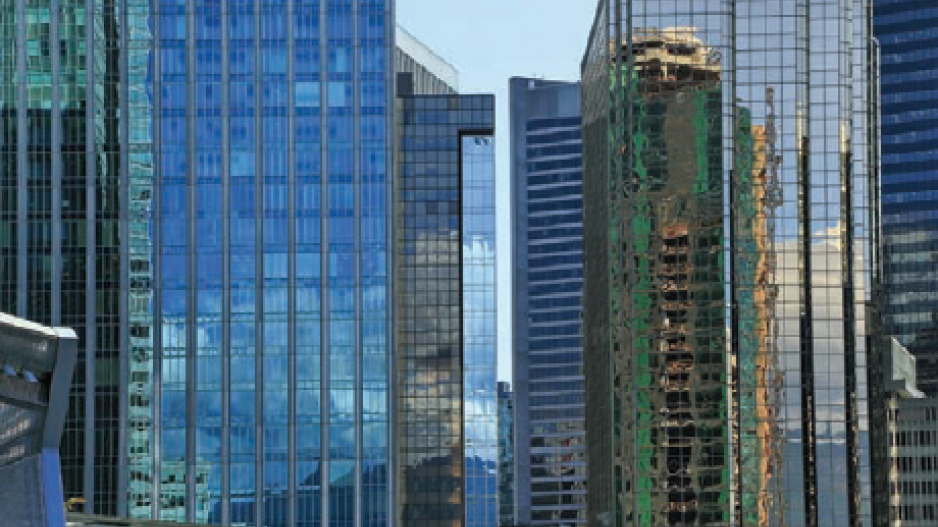Vacancies in downtown Vancouver office towers are at their highest in nine years, and rising.
Anxious not to lose tenants, landlords are signing tenants for shorter periods and offering significant concessions to keep them around for the duration.
Meanwhile, with the fate of liquefied natural gas prospects hanging in the balance, many are starting to wonder: where will demand come from?
While a major tenant is in the offing to fill out 745 Thurlow Street, and another prospect is rumoured to be close to signing a deal for two floors of the Exchange – SwissReal Group’s project at 475 Howe Street, which broke ground this spring with nary a pre-lease commitment – most of the activity has been driven by companies already present in the market.
“There’s really only one new tenant coming into the market, and that’s Amazon,” said John Freyvogel, a senior vice-president with Colliers International, during a panel discussion at the Vancouver Real Estate Leasing Conference last month.
With downtown vacancies hitting 9.6% in the third quarter, and the first of the new downtown towers set to come on stream by the end of the year, Freyvogel expects vacancies to top 10% in 2015 – a level not seen since early 2005.
The official Colliers forecast is for A-class vacancies to reach 14% by 2018.
Rising vacancies and questions regarding future demand aren’t limited to top-tier buildings.
The completion of new space typically prompts a reclassification of older space. With A-class buildings in downtown Vancouver averaging 25 years old, the pending wave of completions will put pressure on B-class space as tenants vacate older A-class space.
“There aren’t a lot of tenants to backfill the hole,” Bart Corbett, senior vice-president with Cushman & Wakefield Ltd., pointed out. “It’s really been a resource-based market and it’s very soft right now.”
While improvements designed to enhance the comfort of tenants, make workspaces more flexible and give greater control over the interior environment are helpful, a large tranche of the available space is still limited to competing on price alone.
“Having a building with something unique about it, that can differentiate yourself,” Corbett said. “[But] if you’re caught in that B-class market with the standard, centre-core building – which is very efficient – then your game is price.”
Still, unique space is appealing to many tenants, boosting the competition between A- and B-class space and raising pressure on landlords to respond.
“The lines between the As and the Bs are starting to blur,” said Mark Chambers, executive vice-president with Jones Lang LaSalle (JLL). “You’ve got groups now asking, ‘What does my space look like?’”
JLL recently leased 6,800 square feet in the Marine building, a heritage property that has undergone renovations in conjunction with Oxford Property Group’s development of the MNP tower at 1021 West Hastings. The improvements broaden its appeal beyond traditional downtown tenants to the tech companies on which the city has pinned its hopes.
“It’s all about how you differentiate yourself in a relatively commodity-based industry,” Steve Duyvewaardt, principal of SDM Realty Advisors Ltd., told the panel. “You’ve got to be in the game, and I think if you’ve got the benefit of location, then that’s a very positive thing.”
However, landlords need to cater to tenants, find out what they want and outfit properties accordingly. SDM has incorporated amenities such as showers and bicycle lockups for the city’s growing number of pedal-powered commuters, while Uptown Property Group has taken more dramatic steps at 675 West Hastings, reconfiguring whole floors and overhauling mechanical systems.
Duyvewaardt said including tenants in the planning is one way to add certainty in a market where there’s no clear source of demand and there are rising choices for tenants.
“You’ve got to pre-qualify people and try to figure out what the hot buttons are for the tenant,” he said. •




